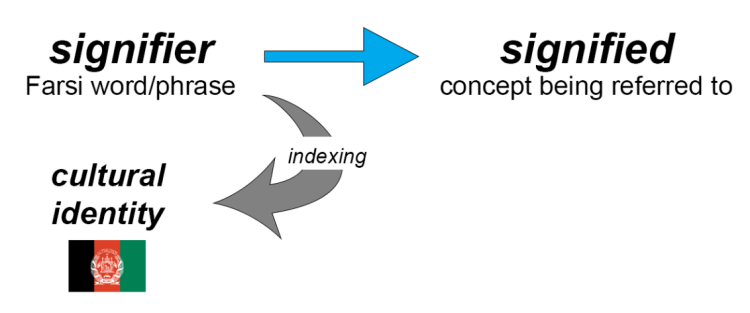Just a Dash of Farsi: Language and Identity
Author: Vida Alami
Nominator: Adam Hodges
Course: LING 4800 Language and Culture, Spring 2021
LURA 2022
Representations of Afghan cultural identity in the American consciousness are few and far between. It would be hard to dispute that the most famous of these representations is authored by Khaled Hosseini, whose crown jewel, The Kite Runner, seems to have achieved permanent residence on every “books that everyone should read” list.
The novel details a lifelong pursuit of redemption for the protagonist, Amir, after a tragedy he let befall his childhood best friend and servant, Hassan. Their relationship lies on ethnic and class divides, unjust social conditions that are further agitated with the Soviet invasion of Afghanistan and subsequent war in the 1980s. American readers have widely gushed about the story’s poignant themes despite the unfamiliar cultural context.
For all the praise that The Kite Runner has received, it has failed to appeal to many people. I surveyed some critical reviews of the novel and noticed a frequent complaint that had to do with language. Goodreads user Chris articulated this criticism best by mocking Hosseini’s choice to “include some random words in [his] native language for no reason whatsoever” (2007). Indeed, Farsi words and phrases are peppered liberally throughout The Kite Runner.
In this essay, I wanted to see why that was. I argue that Farsi in The Kite Runner creates an inoffensive Afghan-American identity for its English-speaking audience to consume.
First, a short tour of the Farsi instances in the novel shows that Farsi words and phrases are used even when a very direct English equivalent is available.

Words like morgh (chicken) and balay (yes) offer no additional semantic value to the sentences in which they appear. Instead, we can understand their value through the lens of Peirce’s (1960) idea about the indexical relationship between a word (signifier) and what it represents (signified). To take one example, the word iftikhar in this sentence from Amir’s perspective is pointing back to, or indexing, the Afghan identity that the text as a whole creates: “I couldn't lie to her and say that my pride, my iftikhar, wasn’t stung at all that she had been with a man, whereas I had never taken a woman to bed” (Hosseini, 2003, p. 142). Because the reader depends entirely on the author’s provided translation to know what the word signifies, iftikhar primarily offers a social meaning and indexes the specific pride associated with Afghan masculinity.

We can also consider how this written text still manages to be interactive, requiring the audience to help build. The effect that Farsi has in The Kite Runner is an example of a pair of processes involved in the creation of identity through language. These “tactics of intersubjectivity”, a framework developed by Bucholtz and Hall (2004), are adequation (highlighting similarities between groups) and distinction (highlighting differences).
To see how the novel accomplishes adequation of Afghan culture with its Western audience, we can look at instances of Farsi as a sort of metafiction. It reflects awareness of the audience. In one example, a minor character says, “‘It sounded like a jaroo, a broomstick, snapping in half’” (Hosseini, 2003, p. 166). The translation was written in as part of her speech, but a person wouldn’t realistically translate a word to English when talking to other Farsi speakers. This is purely to make readers feel included, as they can now point to a single object in the world and name it in two languages.
Just as important is the manner in which Farsi maintains a distinction between cultures. Hosseini does things like use yelda, the culturally significant and celebrated winter solstice, in analogies for beauty. Similarly, while characters in the narrative immigrate to the U.S. and try to assimilate, Farsi vocabulary continues to appear in the prose, resisting assimilation. It is important to realize that these tactics create “just enough” distinction: enough for the audience to feel like they are learning something about people across the world from them, but not enough to alienate them.
With these concepts in mind, it’s clear that Khaled Hosseini’s use of Farsi in The Kite Runner indexes Afghan identity and balances adequation and distinction to attract American readers’ approval of that identity.
Header image credit: https://miro.medium.com/max/1050/1*0i09Dg7mijfV6fUE62gd0A.jpeg
Bucholtz, M., & Hall, K. (2004). Language and Identity (pp. 369–394). https://doi.org/10.1002/9780470996522.ch16
Chris. (2007, May 21). Review of The Kite Runner [Book Review]. Goodreads. https://www.goodreads.com/review/show/1338106?book_show_action=true
Hosseini, K. (2003). The Kite Runner. Riverhead Books.
Peirce, C. S., Hartshorne, C., Weiss, P., & Burks, A. W. (1960). Collected papers of Charles Sanders Peirce. Belknap Press of Harvard University Press.


